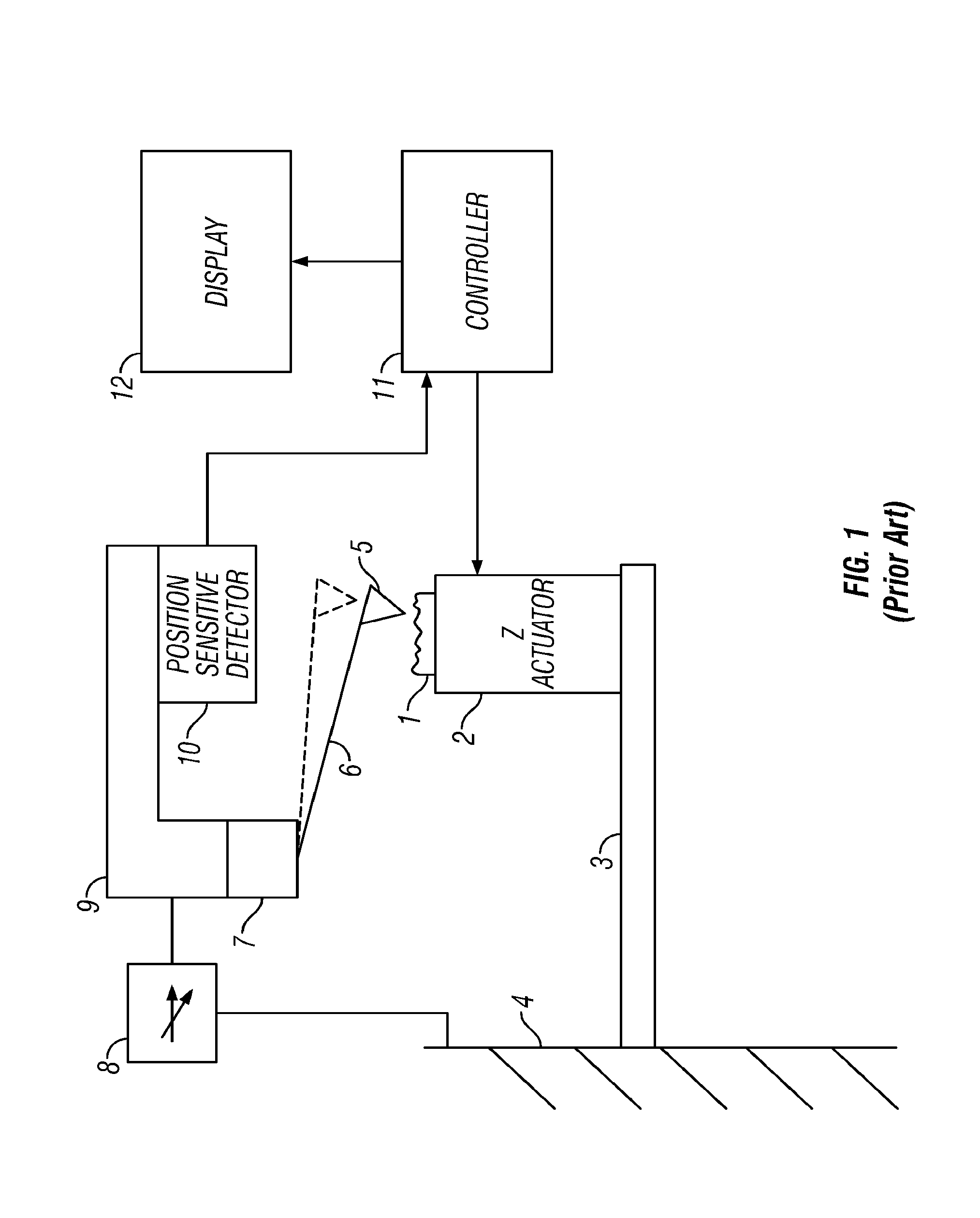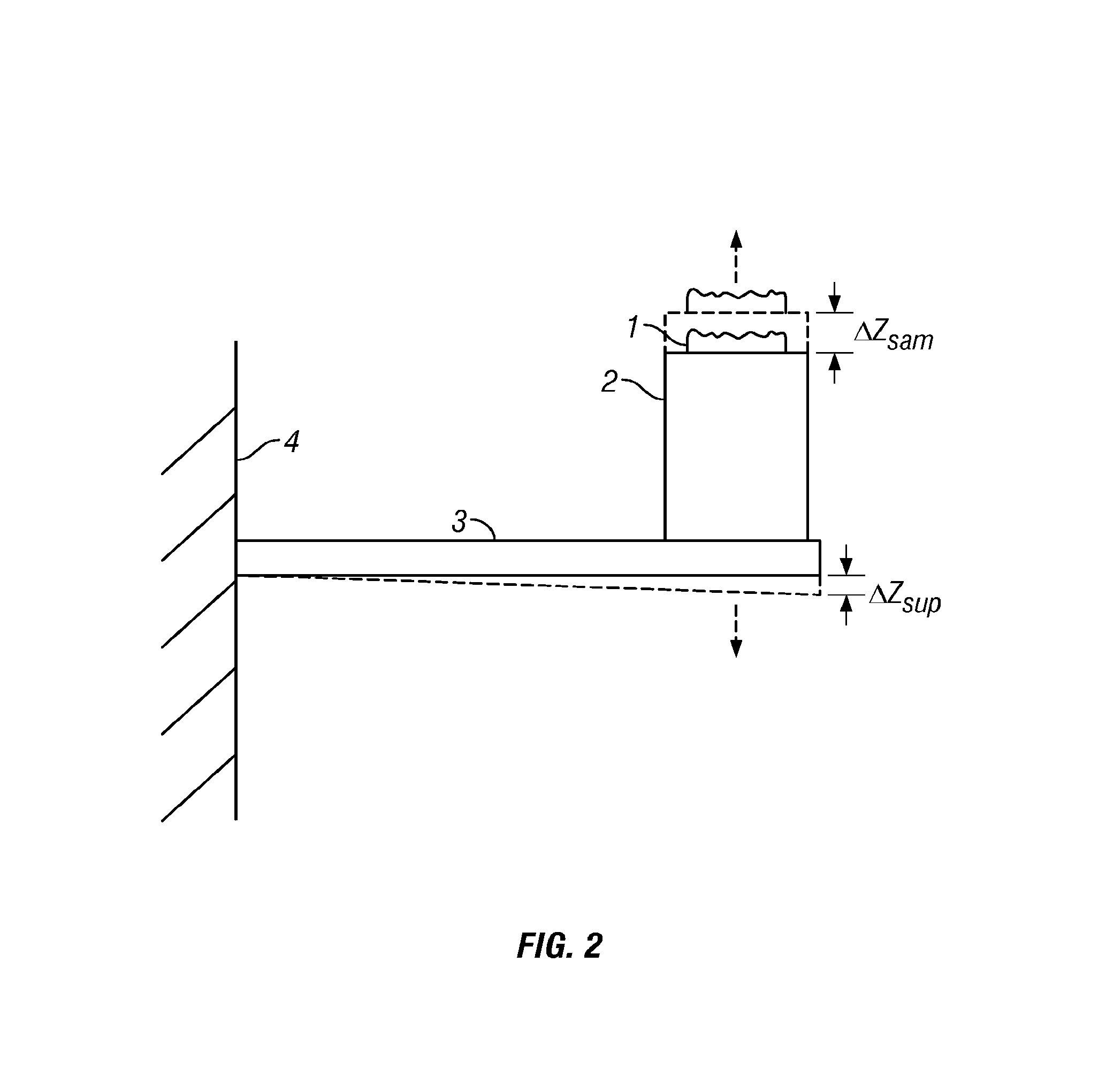Active damping of high speed scanning probe microscope components
a scanning probe and component technology, applied in the direction of instruments, shock absorbers, force/torque/work measurement apparatus, etc., can solve the problems of sample and/or probe damage, actuators may not be able to move either the sample or the base of the cantilever quickly, and the accuracy of atomic force microscope sample characterization is often limited, so as to reduce cost and complexity, simplify the design and implementation of active damping, and enhance performance
- Summary
- Abstract
- Description
- Claims
- Application Information
AI Technical Summary
Benefits of technology
Problems solved by technology
Method used
Image
Examples
Embodiment Construction
[0051]Cantilever-based instruments include such instruments as atomic force microscopes, molecular force probe instruments (1D or 3D), high-resolution profilometers and chemical or biological sensing probes. The embodiment describes atomic force microscopes (AFMs). The embodiments encompass these devices as well as any other metrology instrument that can be used in nanoscale applications.
[0052]According to an embodiment, any mechanical oscillations in the atomic force microscope support structure is measured. A damping force is applied with the goal of preventing the parasitic oscillations from degrading performance. Active damping of the support structure enables extremely accurate scanning of even the smallest surface features and even at high scan speeds where conventional actuators suffer from poor performance.
[0053]Embodiments can be used with cantilever-based instruments, that is, an apparatus having a probe for characterizing a sample. The apparatus may have an x-actuator, a ...
PUM
 Login to View More
Login to View More Abstract
Description
Claims
Application Information
 Login to View More
Login to View More - R&D
- Intellectual Property
- Life Sciences
- Materials
- Tech Scout
- Unparalleled Data Quality
- Higher Quality Content
- 60% Fewer Hallucinations
Browse by: Latest US Patents, China's latest patents, Technical Efficacy Thesaurus, Application Domain, Technology Topic, Popular Technical Reports.
© 2025 PatSnap. All rights reserved.Legal|Privacy policy|Modern Slavery Act Transparency Statement|Sitemap|About US| Contact US: help@patsnap.com



